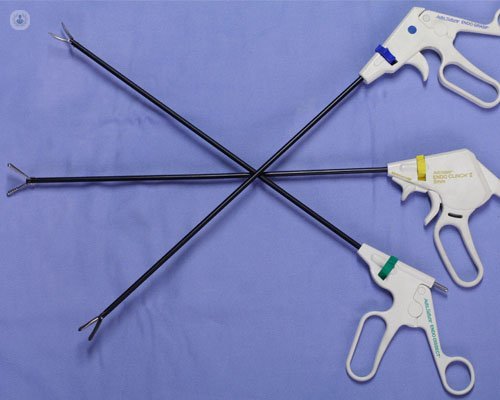3 key points of laparoscopic surgery
Written by:Laparoscopy came under the experience gained in endoscopic surgery through natural orifices, where they agreed to resolve pathologies called hollow viscera (bladder, prostate, ureters, uterus, stomach, intestine, etc.). The Urology pioneered this type of intervention "without incision" and, in fact, one of the first to develop laparoscopy, for which it was intended to solve pathologies, not only hollow viscera, but also of solid organs, using the experience in using vision cameras. However, laparoscopy was further developed in specialties such as gynecology and general surgery, while in urology, has taken longer to implement because of its difficulty.
Still, in recent years, the development of instruments and devices improved image and training professionals have facilitated the explosion of urological laparoscopic surgery. With this introduction, it is now possible to carry out interventions of great complexity less invasively.

Types of laparoscopic surgery
In urological laparoscopic surgery, the main procedures carried out are:
- Removal of the kidney (nephrectomy) and partial laparoscopic radical
- Removal of adrenal glands (adrenalectomy) Laparoscopic
- Pyeloplasty (reconstruction of the urinary tract) Laparoscopic
- Pyelotomy / ureterolithotomy (extraction via urinary stones) Laparoscopic
- radical prostatectomy (prostate removal) Laparoscopic
- Laparoscopic surgery for urinary incontinence
- Laparoscopic correction of pelvic organ prolapse
- radical cystectomy (removal of the urinary bladder) and laparoscopic urinary diversion to stomata or even bladders made with intestine.
What is laparoscopic surgery
Laparoscopy is minimally invasive alternative to conventional open surgery, which requires large incisions and generally produce pain and leaves the patient prolonged convalescence.
This surgical technique uses a small camera called a laparoscope to transmit enlarged and improved image of the internal organs of the abdomen to a TV monitor. Thus, the surgeon may be guided to perform the required surgical procedure.
For instruments, laparoscopy requires three or four incisions between 0.5 and 1 cm, while in conventional surgery, are between 15 and 20 cm.
Thus, laparoscopic surgery follows the same schemes open surgery, but by a more specific and smaller material.
Advantages of laparoscopic surgery
Since this is a minimally invasive surgical technique, laparoscopic surgery has several advantages over open surgery:
- Faster recovery
- Smaller wounds
- Less bleeding
- more precise sutures
- Minor separation of tissues to access the area to be treated
- Joining normal activity faster
- Similar results or superior to open surgery



